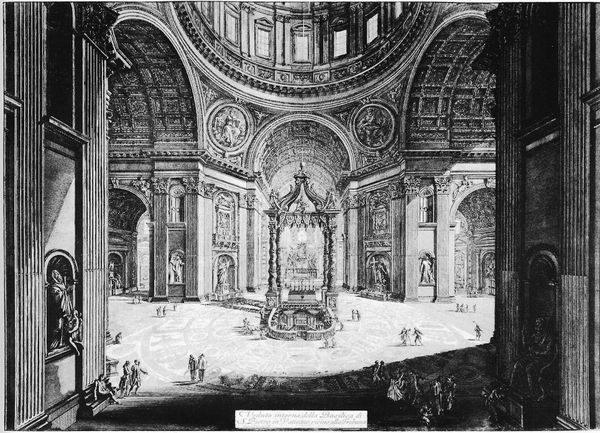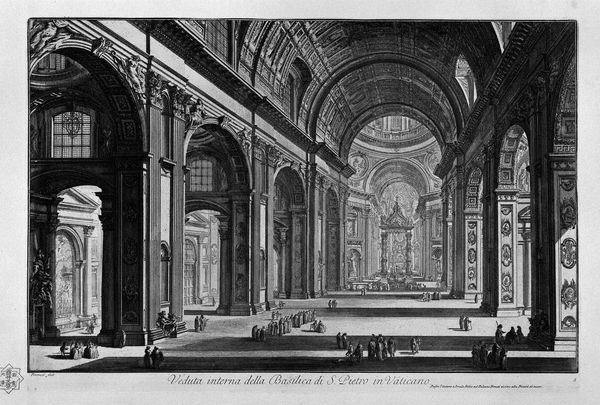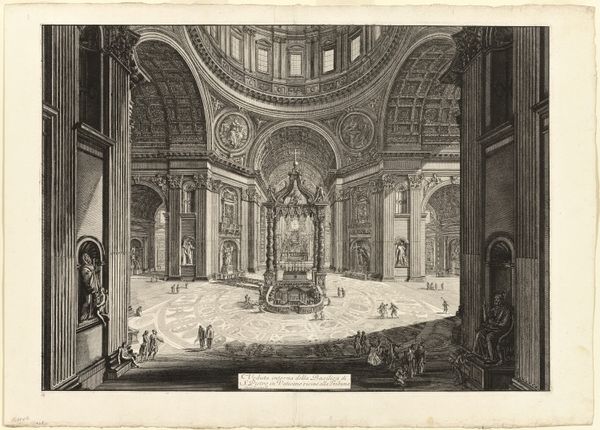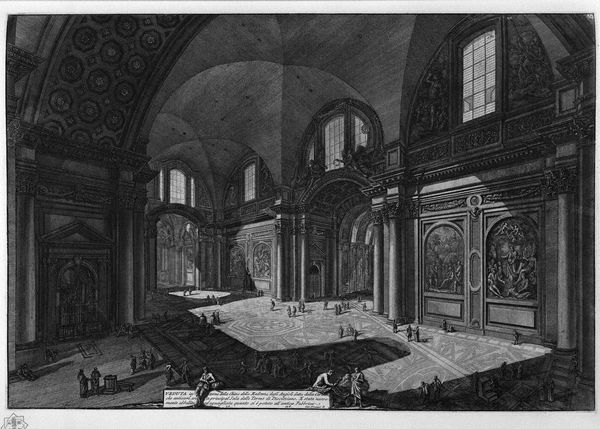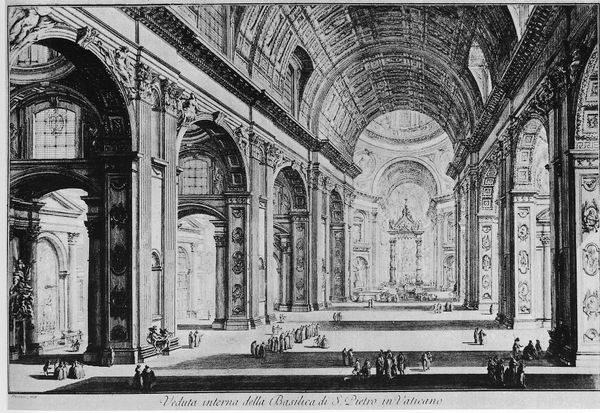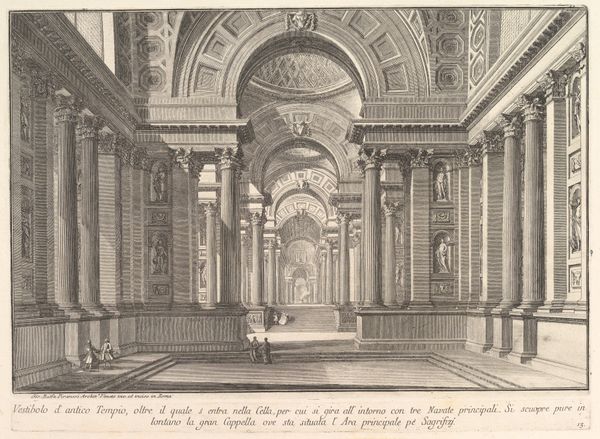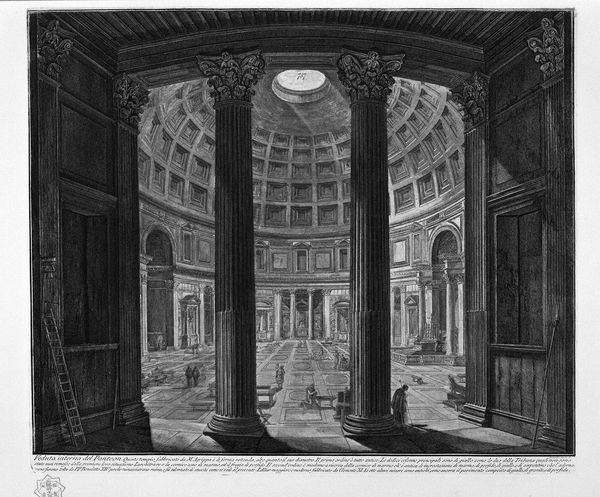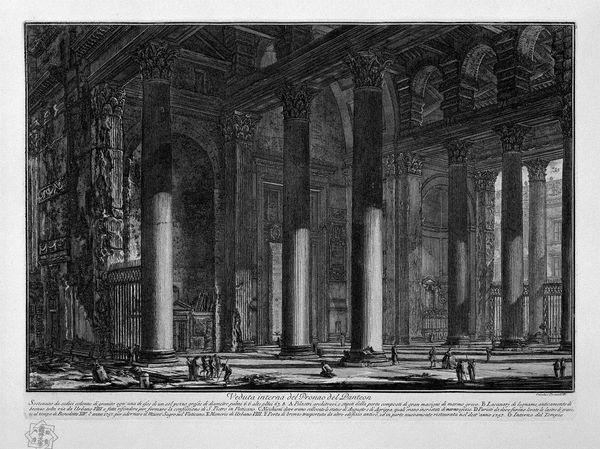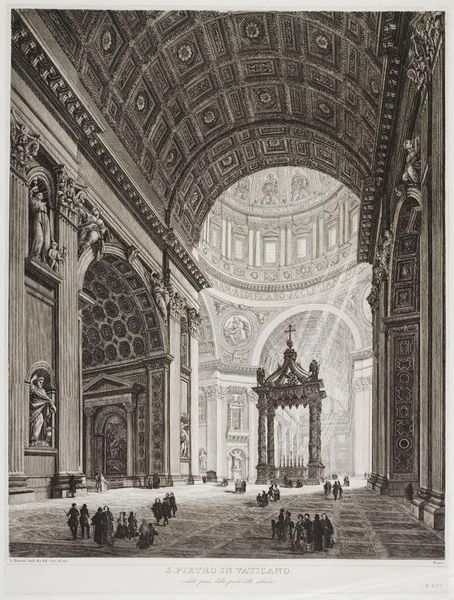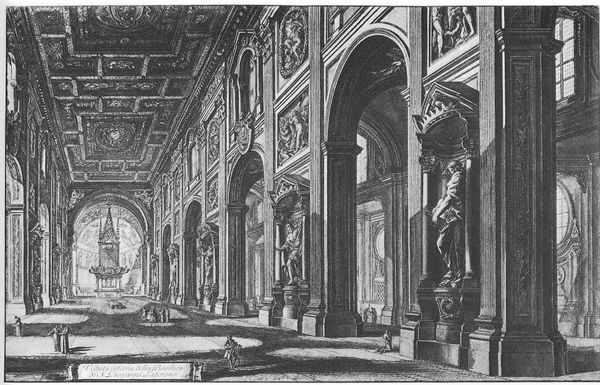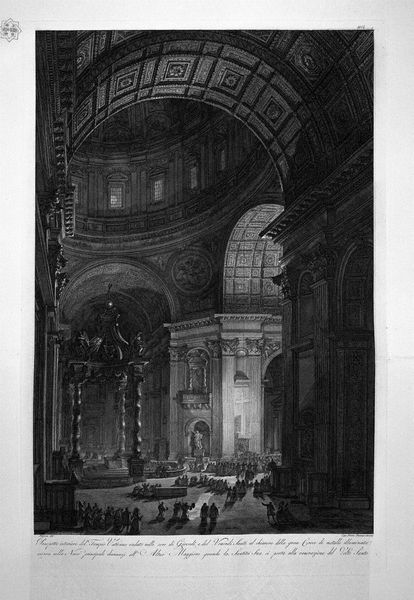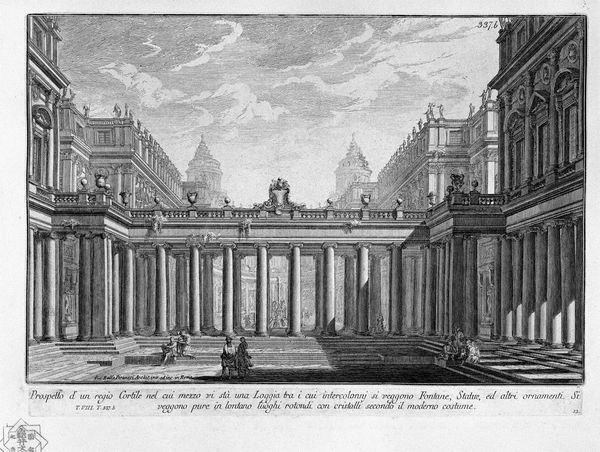
print, photography, engraving, architecture
#
baroque
# print
#
sculpture
#
holy-places
#
perspective
#
form
#
photography
#
geometric
#
carved
#
line
#
cityscape
#
history-painting
#
engraving
#
architecture
Copyright: Public domain
Curator: Looking at this print titled "Interior view of the Basilica of St. Peter in the Vatican" by Giovanni Battista Piranesi, I am immediately struck by the sheer grandeur it attempts to capture. It feels…almost theatrical, a stage set for something monumental. Editor: The immediate impression is of stone and shadow, a stark materiality. It's an engraving, right? So, we're looking at labor-intensive work, each line carefully etched, replicated, printed… reflecting a real investment in the representation of power. Curator: Absolutely. As a Baroque engraving, it's more than just a depiction of a building. St. Peter’s carries layers of symbolic meaning. Consider the oculus atop the dome—the eye of God looking down, or the altar in the foreground. Even the geometric forms can be viewed as heavenly patterns made manifest. Editor: I am intrigued by those small figures. Look at the sheer scale; it dwarfs them. They give context for comprehending the labor required to even build something of that proportion. Where were the materials sourced? How long did the labor last to create this building of religious authority? The social context of such constructions speaks of power. Curator: The perspective tricks the eye, exaggerating depth, creating a kind of dizzying spiritual intensity. That intense focus on form relates to history painting and other cultural stories and interpretations we assign the art. What historical forces contributed to shaping that symbolic architecture? Editor: Do you see a social narrative present? I do. I consider how many people were possibly forced to construct this, and what means of manipulation resulted in such devoted architectural endeavors. Curator: And to add even further interpretation to its purpose—this architecture symbolizes the continuity of the Catholic church, a reminder of history and traditions through tangible geometric form. What stands before you must remain solid and immovable in spite of secularizing threats. Editor: Indeed, the visual permanence. Its strength persists, in both architecture, medium, and ideology. Thank you for your fascinating overview, delving deep into the symbolism layered within.
Comments
No comments
Be the first to comment and join the conversation on the ultimate creative platform.
